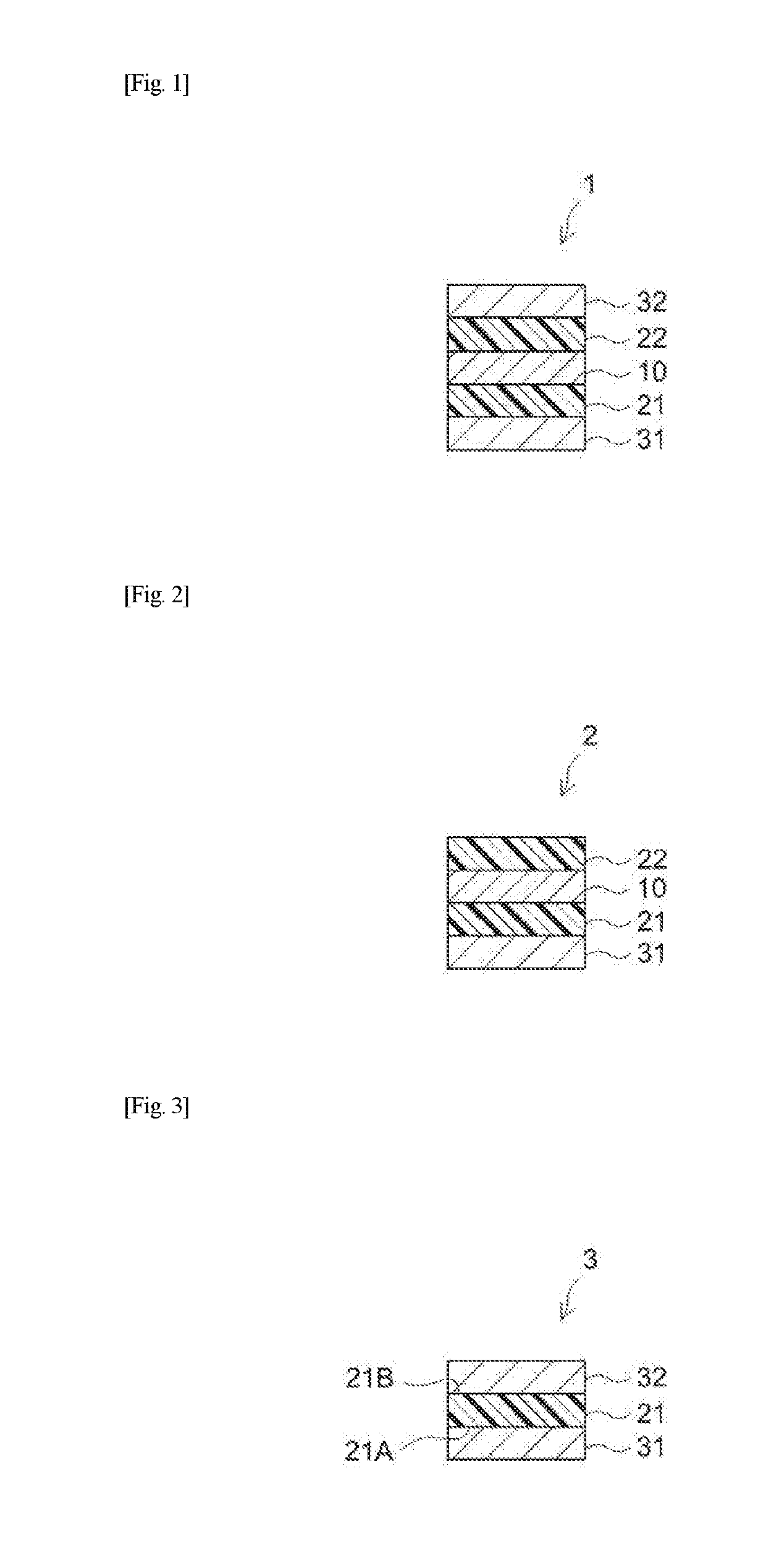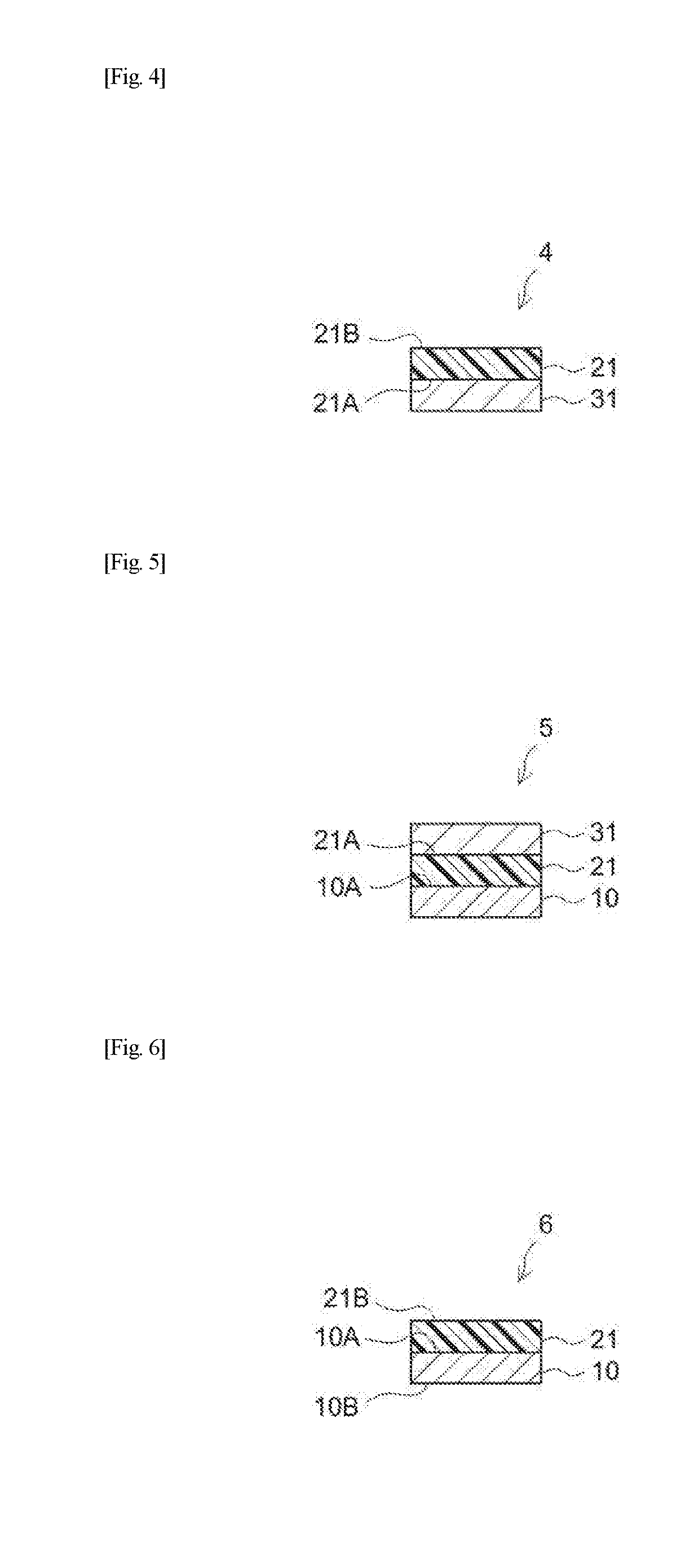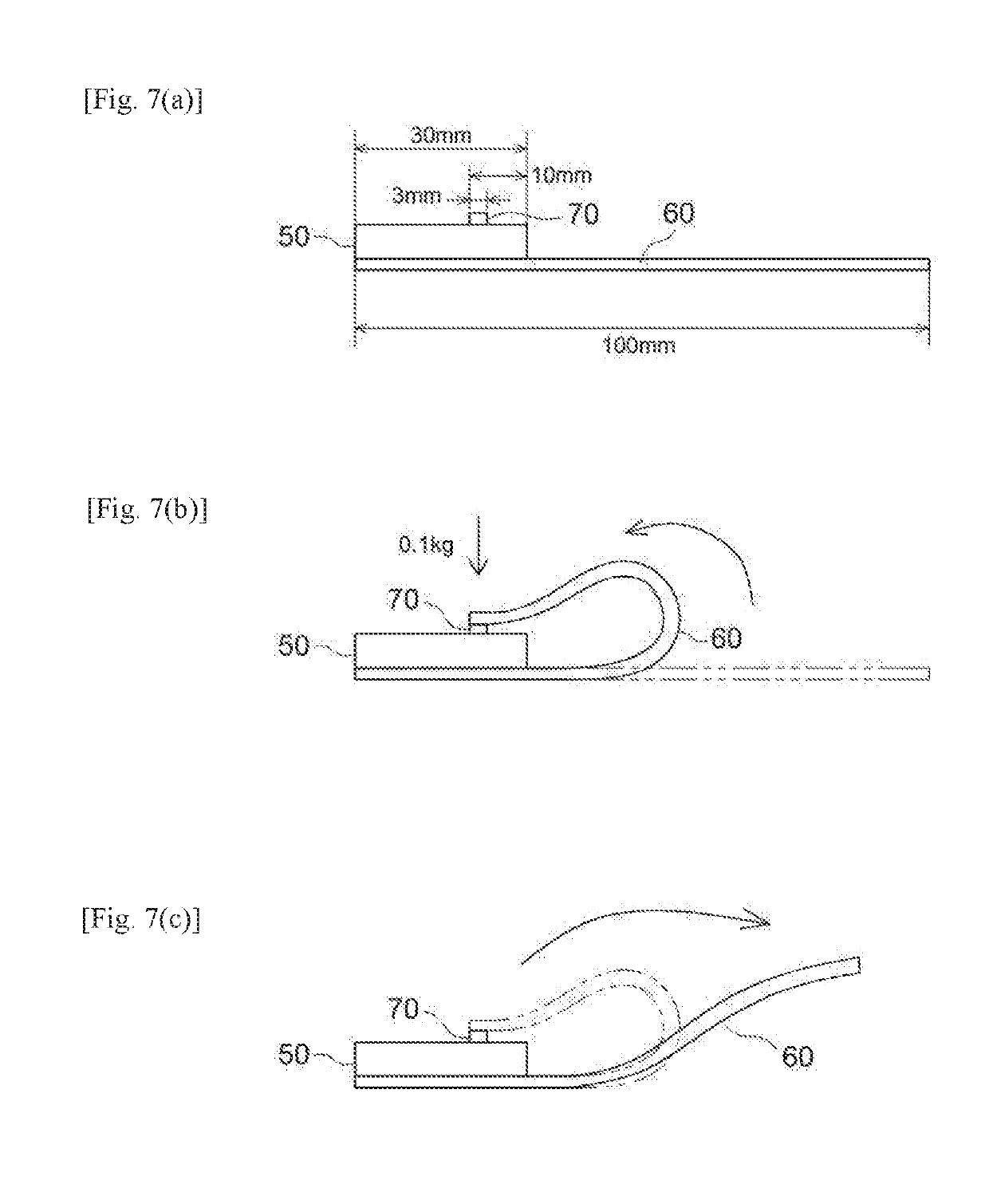Pressure-sensitive adhesive sheet
a pressure-sensitive, adhesive sheet technology, applied in the direction of film/foil adhesives without carriers, film/foil adhesives, adhesive types, etc., can solve the problems of psa suffering a decrease in deformation resistance to external force, small bonding area, and low cohesive strength, so as to improve deformation resistance and improve adhesion. excellent, excellent initial adhesion
- Summary
- Abstract
- Description
- Claims
- Application Information
AI Technical Summary
Benefits of technology
Problems solved by technology
Method used
Image
Examples
example 1
(Preparation of Acrylic Polymer Solution)
[0207]In a reaction vessel equipped with a stirrer, thermometer, nitrogen inlet, reflux condenser and addition funnel, were placed 90 parts of 2EHA and 10 parts of AA as monomers as well as ethyl acetate and toluene at about 1:1 (volume ratio) as polymerization solvents. The resulting mixture was stirred under a nitrogen flow for two hours. After oxygen was removed from the polymerization system in such a manner, was added 0.2 part of BPO as a polymerization initiator. Polymerization was carried out at 60° C. for 6 hours to obtain an acrylic polymer solution according to this Example.
(Preparation of PSA Composition)
[0208]To the resulting acrylic polymer solution, were added 0.05 part of epoxy-based crosslinking agent (product name TETRAD-C, 1,3-bis(N,N-diglycidylaminomethyl)cyclohexane, available from Mitsubishi Gas Chemical Co., Ltd.) and 20 parts of terpene-phenol resin (product name TAMANOL 803L, available from Arakawa Chemical Industries,...
examples 2 to 5
[0210]The monomer compositions were modified as shown in Table 1. Otherwise in the same manner as in Example 1, were prepared acrylic polymer solutions according to the respective Examples. Using the resulting acrylic polymers, in the same manner as in Example 1, were prepared PSA compositions according to the respective Examples and were fabricated substrate-free, adhesively double-faced PSA sheets according to the respective Examples.
example 6
(Preparation of PSA Composition)
[0211]To a monomer mixture of 90 parts of 2EHA and 10 parts of AA, were admixed 0.05 part of 2,2-dimethoxy-1,2-diphenylethane-1-one (available from BASF Corporation, trade name IRGACURE 651) and 0.05 part of 1-hydroxycyclohexyl phenyl ketone (available from BASF Corporation, trade name IRGACURE 184) as photopolymerization initiators. The resulting mixture was irradiated with UV to a viscosity of about 15 Pa·s to obtain a partially-polymerized product (monomer syrup). To this monomer syrup, was added 0.1 part by weight of 1,6-hexanediol diacrylate and uniformly mixed to prepare a PSA composition. The viscosity was determined using a BH viscometer with a rotor (No. 5 rotor) at a frequency of rotation of 10 rpm at a measurement temperature of 30° C.
(Fabrication of PSA Sheet)
[0212]The same release liners A (75 μm thick) and B (38 μm thick) were obtained as in Example 1. To the release face of release liner A, was applied the PSA composition obtained above...
PUM
| Property | Measurement | Unit |
|---|---|---|
| peel strength | aaaaa | aaaaa |
| thickness | aaaaa | aaaaa |
| temperatures | aaaaa | aaaaa |
Abstract
Description
Claims
Application Information
 Login to View More
Login to View More - R&D
- Intellectual Property
- Life Sciences
- Materials
- Tech Scout
- Unparalleled Data Quality
- Higher Quality Content
- 60% Fewer Hallucinations
Browse by: Latest US Patents, China's latest patents, Technical Efficacy Thesaurus, Application Domain, Technology Topic, Popular Technical Reports.
© 2025 PatSnap. All rights reserved.Legal|Privacy policy|Modern Slavery Act Transparency Statement|Sitemap|About US| Contact US: help@patsnap.com



